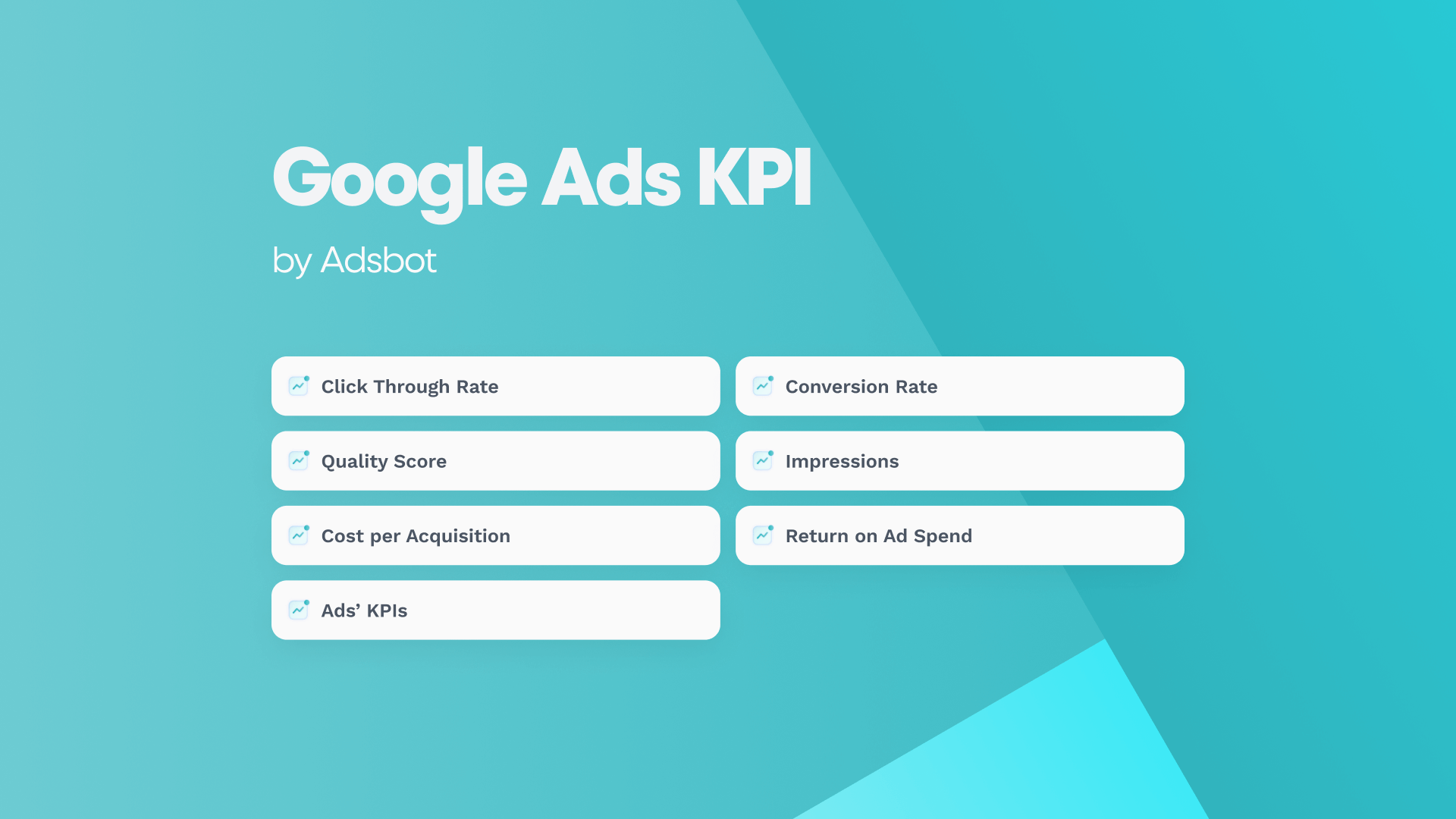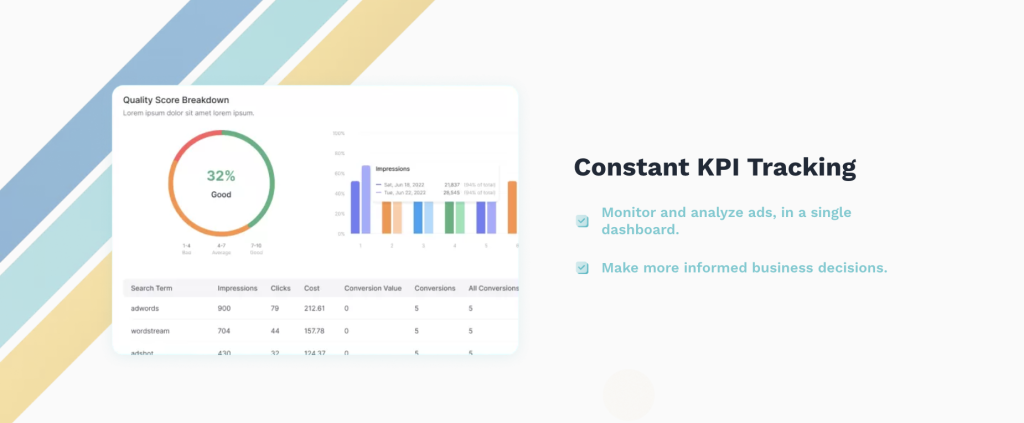How can I improve Google Ads performance? Is this is the your daily question when you start working in the mornings? We will be discussing key performance indicators (KPIs) and how to use them to maximize the return on your ad spend. Get ready to take your Google Ads campaigns to the next level!
Introduction to Google Ads KPI
Google Ads KPI is an important metric used to measure the performance of a marketing campaign. It helps advertisers track the success of their campaigns, measure the return on ad spend (ROAS), and optimize Google Ads campaigns for better results. By understanding the various metrics used in Google Ads and setting clear goals, marketers can use KPIs to track their campaign’s progress and make informed decisions about how to improve their campaigns.
Understanding Key Performance Indicators (KPIs)
Understanding Key Performance Indicators (KPIs) is a crucial step in measuring the success of any Google Ads campaign. KPIs for Google Ads are measurable and transparent performance indicators that can be used to objectively assess, analyze and optimize the effectiveness of any given campaign. Examples of the most important KPIs include Return on Ad Spend (ROAS), Cost Per Click (CPC), Click-Through Rate (CTR), Conversion Rate, Quality Score, and more. By tracking your Google Adwords KPI metrics, you can gain insight into the performance of your campaigns, determine areas where they need improvement, and learn for example how improve quality score for better performance on your ongoing campaigns.
Top Metrics to Measure on Google Ads
The Top 10 metrics to measure on Google Ads are impressions, ROAS, CPC, CTR, conversion rate, quality score, and setting goals and measuring performance. These key performance indicators can be used to analyze campaign performance and determine how to increase ROIs. Impressions measure the number of times your ad is seen while ROAS measures your return on advertising spend. CPC is an overall metric that tells you how much money you have spent on your ad campaign so far while CTR measures how often people who see your ad interact with it. Conversion rate measures the number of conversions from a particular ad and quality score is an algorithm that determines the relevance of your ads and keywords. Setting goals and measuring performance is an important step in understanding the effectiveness of your ads and making the necessary adjustments to maximize returns.
-
Impressions
Impressions are an important KPI to monitor on Google Ads, as the number of impressions achieved by your ad can give you an indication of how effective your campaigns are. Besides tracking impressions, you should also consider the percentage of potential impressions (impression share) that have been achieved. This is calculated by dividing the number of impressions achieved by your ad by the total number of eligible impressions based on your targeting settings and budget. Additionally, tracking your search absolute top impression rate (Impr. (Abs. Top) %) can be useful in understanding how often your ads show up as the very first ad above the organic search results.
-
Return on Ad Spend (ROAS)
Return on Ad Spend (ROAS) is a key performance indicator (KPI) used to measure the efficacy of a digital advertising campaign. It is calculated by dividing the revenue generated from ads by the cost of ads. ROAS measures how much of your advertising spend you get back in revenue, and is one of the most important Google Ads goals.
-
Cost Per Click (CPC)
Cost Per Click (CPC) is a Google ads KPI that is used to measure the cost of each click on your ad. The average CPC across all industries on Google Ads is $2.69 for search and $0.63 for display so you can research and consider what is a good cost per click for your account. To calculate CPC, simply divide your total ad cost by the number of clicks received. Quality score also has an impact on CPC, as it helps Google determine how relevant and useful your ad is compared to others. It’s important to keep track of CPC, as it can give you insight into how effective your ads are and help you make decisions about optimizing them for better performance. Also, you may want to learn more about CPC and the difference between CPC and CPM.
-
Click-Through Rate (CTR)
The click-through-rate (CTR) is a Google Ads KPI that shows the ratio of clicks received on ads in relation to total impressions. It indicates how many people clicked on your ad after it was shown, and is an important metric for gauging the effectiveness of your campaigns. According to LocalIQ November 2022 data, the average click-through rate for Google Ads is 3.17%. By tracking this metric, you can determine how well your campaigns are performing and make necessary adjustments to maximize success. You can learn more about what is a good click-through rate to perform well on your Google Ads campaigns.
-
Conversion Rate
The next essential KPI to measure on Google Ads is conversion rate. Conversion rate indicates the percentage of people who clicked on your ad and completed a desired action. It is calculated by taking the number of conversions and dividing it by the total number of clicks. The average conversion rate across Google Ads is 4%, 40% on the search network, and 0.57% on the display network. However, the average conversion rate across industries for Google Ads is 3.75%. To increase your conversion rate, you can try reducing your ad spend, determining the right target audience, and making Google Ads optimization for mobile devices.
-
Quality Score
Quality Score is a key metric to monitor when it comes to Google Ads. It is Google’s rating of the quality and relevance of both your keywords and PPC ads and is used to determine your cost per click (CPC). A high-quality score means your ad is more relevant, which can lead to lower costs and higher ad positions. Quality score reveals if your ad and landing page are relevant enough for your keywords, so it should be kept as high as possible in order to decrease cost per click. However, it should not be the primary KPI metric that you focus on when measuring performance.
Setting Goals and Measuring Performance
Once you’ve set the goals for your Google Ads campaigns, you can use KPIs in Google Ads to measure their performance. By tracking the KPIs, you can gain Google Ads insights into how well your campaigns are doing in terms of reaching your overall objectives. This will help you adjust your strategy and optimize your campaigns for better results. It is important to remember that measuring performance is not a one-time event; it should be done on a regular basis to ensure that your campaigns are on track. Do not forget that Google Ads (formerly known as Google AdWords) is a powerful tool that allows businesses to measure the effectiveness of their digital advertising campaigns.
Advertising metrics and KPIs serve as important indicators of how successful a campaign is in terms of reaching its goals.
Some of the most important KPIs for Google Ads include Cost per Click (CPC): Which measures the average cost of each click on an ad.
- Click Through Rate (CTR): This measures the rate at which people clicked on an ad after it was shown.
- Conversion Rate: This measures the rate at which people who clicked on the ad completed a desired action, such as making a purchase or signing up for a newsletter.
- Quality Score: This measures how relevant and engaging an ad is to its target audience.
- Impressions: This measures the number of times an ad was seen by potential customers.
- Cost per Acquisition (CPA): This measures the average cost of a single conversion.
- Return on Ad Spend (ROAS): This measures how much profit a business earns in relation to how much money it spends on Google Ads.
- Ads’ KPIs are essential for any business to analyze the performance of its Google Ads campaigns. By tracking these KPIs on the KPI Dashboard, businesses can identify which campaigns are performing well and which ones aren’t, so they can make the necessary adjustments to ensure they are getting the most out of their investment.
How Does Adsbot Help You?
Adasbot helps you track your KPIs to see your progress towards your targets: Set your goals and monitor your performance with our KPI tracking tool. View your current status for budget, revenue, conversion, and CPA, based on this month’s data. Edit your goals at any time to ensure you stay on track.
Besided, you can get insights, alerts and smart recommendations with a single click. You will have full control on your account and focus on strategy. Start you free trial today and see Adsbot in action.
Popular Posts
-
How Many Keywords Should Be In an Ad Group in Google Ads?
Ever wondered if your Google Ads campaigns are packed with…
Read more -
Google Ads Script for Dummies: An Introduction
Imagine you have an e-commerce website that sells licensed superhero…
Read more -
Google Ads Sitelink Character Limits
Your Google Ads are cutting off in the middle of…
Read more -
What Is Conversion Value in Google Ads?
What if you could put a price tag on every…
Read more
Register for our Free 14-day Trial now!
No credit card required, cancel anytime.






